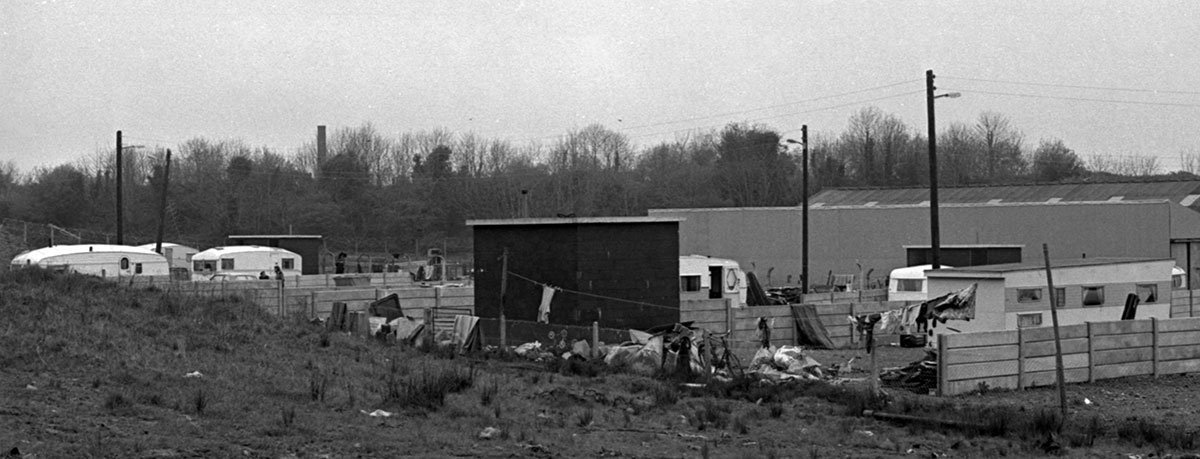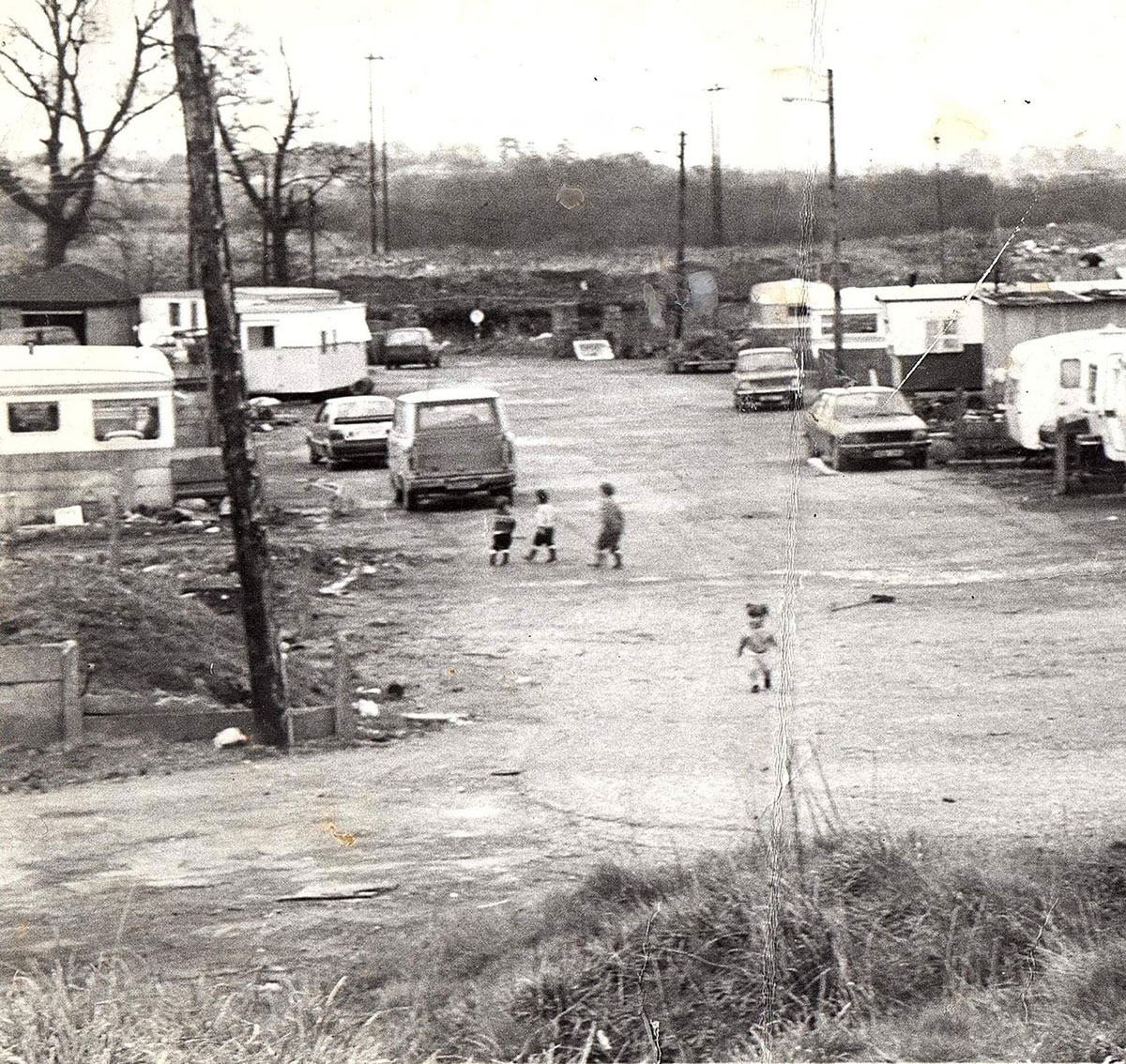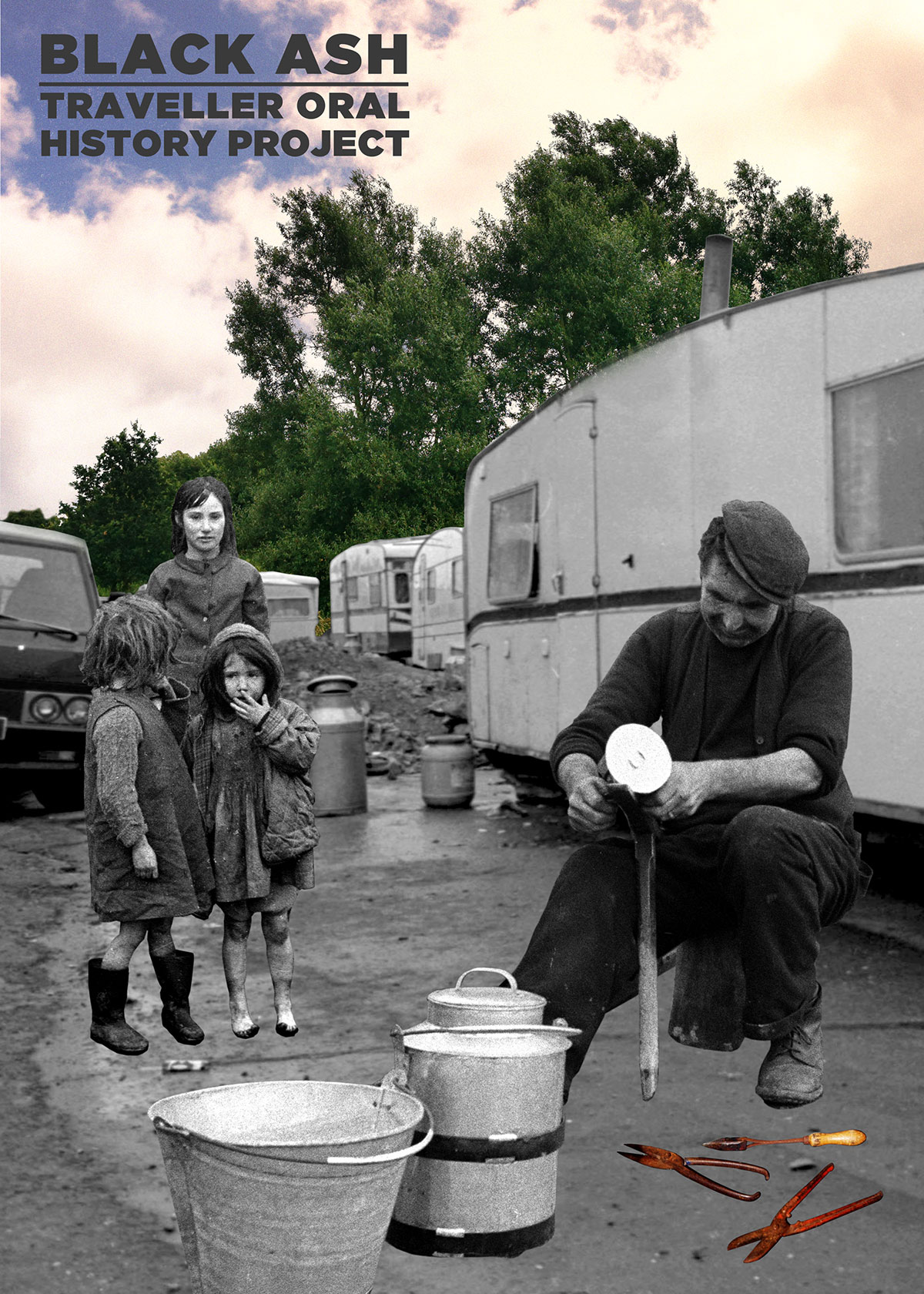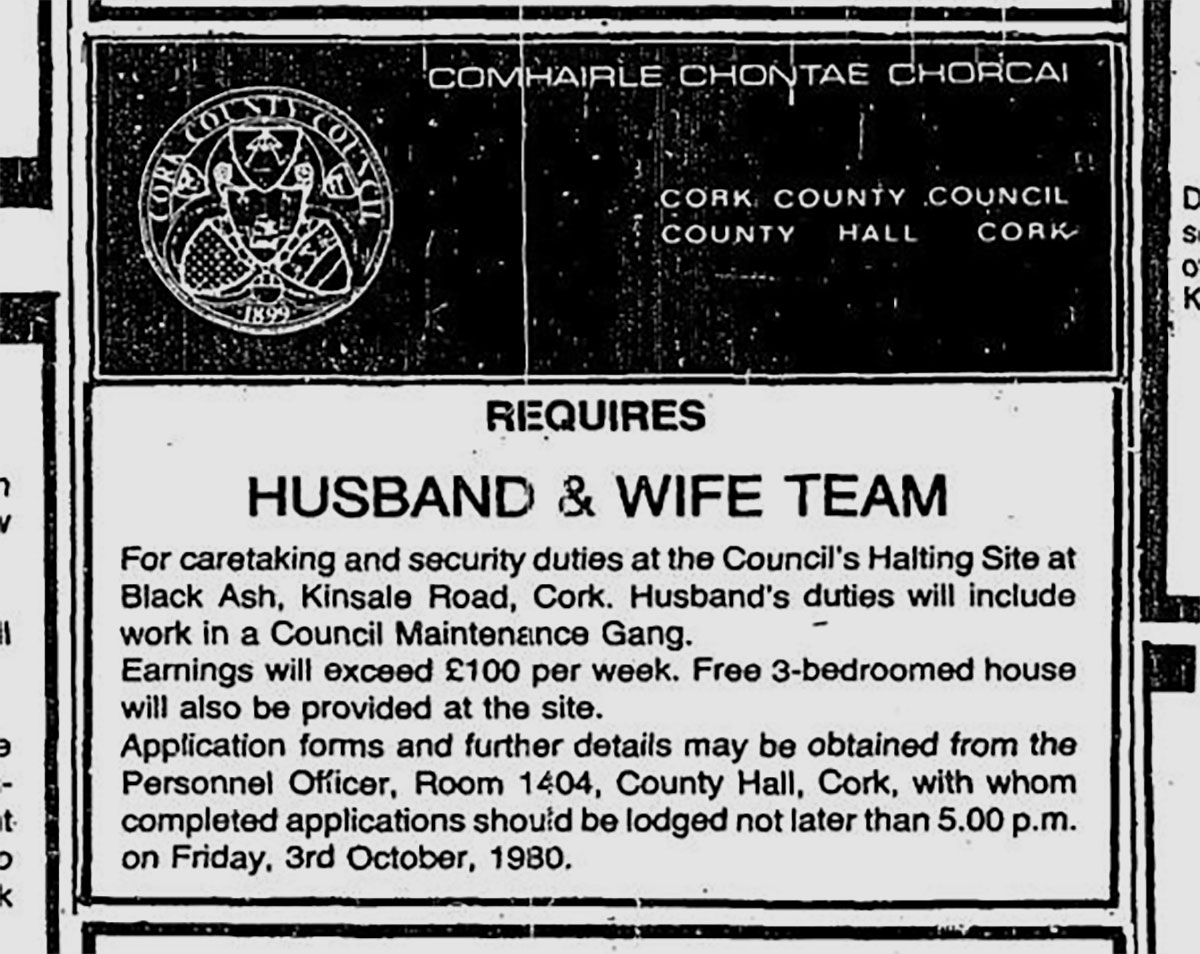Listen to the Oral History

Black Ash Camp (before 1980)
“We lived in the lane way in a wagon in the Black Ash, It was a lovely homely place. There wasn’t a Traveller name in Ireland that didn’t come through the Black Ash when we were nomadic “
The area was known as the Black Ash camp and was a permanent home to Traveller families, as well as providing a safe, welcoming, stopping place for visiting nomadic Traveller families – who stayed for days, months or sometimes years. The Black Ash camp is remembered as one of the most important historic camps in Cork for nomadic Travellers, of many different families and surnames from all over Ireland and the UK stopping and passing through. At this time, the Black Ash area was countryside and lane ways beyond the edge of the city. Travellers brought music, stories, tinsmithing, horses and barreltop wagons to the area. This was a time of great freedom for Travellers in Ireland.
“there was always a fire going, and the food was cooked outside on the fire, things like flat bread baked in a pan, or a supper of spuds and stew and everyone would be fed. And in the evening people could gather around the fire for chat and music and a bit of craic. My father played the melodian around the fire in the evenings”
Black Ash Halting Site (1980-1989)
In 1980 Cork Corporation built a halting site for the Travellers between the land where the Kinsale Road Roundabout is today and reaching over to the edge of the Tramore Valley Park. Halting sites were part of a national policy which aimed to move Travellers off the roadside permanently. Nomadism and camping in traditional areas was also restricted by the local authorities at this time.
“there were only 8 bays in the site, so only 8 families could get a bay. There was still a lot of people living outside the site and then the authorities placed boulders outside the site to prevent Travellers from pulling in and started fining people for a thing they did all their lives”
Families paid rent to stay at the Black Ash halting site, which was had very basic conditions, with a hard surface, outside toilet huts with cold water only shared between families, and 8 bays for families to pull a caravan into. Unusually the site had a caretaker employed by the Corporation who lived in a bungalow on the site.
Travellers from the Black Ash halting site can remember a sense of tradition and a tight knit community. Children grew up in a big extended family with long days playing outside, freedom to explore the surrounding countryside and nights gathered around the camp fire with music and chat.
“the site was one big family, we were all reared like brothers and sisters, people looked out for each other and took care of each other. I really remember the freedom and friendship, everyone helping each other out and the camp fires”
The Oak tree that still grows on the city side of the Kinsale Road Roundabout today was on the boundary of the old halting site and children who grew up on the site have fond memories of playing on this tree with rope and tyre swings.
Some Travellers who lived in the Black Ash site kept horses in nearby fields in the Ballyphehane area.




Connections with the local community
There were many positive friendships and connections between the Travellers of the Blackash and the local parish of Ballyphehane. There are many friendships between children and adults between the communities. Travellers were respected in the area for repairing goods, like fixing umbrellas or sharpening tools.
Settled men from the local Ballyphehane area worked side by side with Travellers “dump scraping”, gathering scrap for recycling
“we grew up with the lads from the site, down doing the scrap together, that’s how we filled the days”.
The city dump
Cork Corporation opened the city Landfill site in the Black Ash in December 1976 (4 years before the halting site was built alongside it). Traveller men from the Black Ash site worked gathering scrap metal from this city dump. Scrap was gathered from the dump, then cleaned and sorted on the halting site before being sold on. Other reusable items were gathered from the dump and re used or sold locally. Settled men from the local Ballyphehane area worked side by side with Travellers gathering items for reuse. Travellers from the site led the way in recycling scrap, at a time when there was very little knowledge about recycling in the wider community.
“the men worked really hard gathering scrap from the dump for recycling, they carried it to the site in bags on their backs. Then in the evening, they would be cleaning the scrap, stripping wire, the noise of banging on aluminium and steel”


Living conditions
Unfortunately, the poor living conditions on the halting site and its location, right beside the city dump affected the health of the families living there. Toxic smells from the dump as well as problems with rats were common. From the mid 1980’s, Traveller families from the Black Ash, supported by a local doctor and clergy began lobbying the council for better accommodation. This included media coverage and a public protest at Cork County Hall.
“There were so many rats on the site, you could see a pot running across the road ..the rat was under the pot. I remember a group of the men catching a rat putting him in a cage and talking him out to the county hall and asking to see the city manager to ask him would you live like this?”
The Black Ash site was closed around 1989 to make way for the development of the South Ring Road and the families were moved from caravans into houses. Although Travellers are still part of the local community in Ballyphehane – nomadism and the traditions and freedom that went with it are no longer possible.
Launch
In 2022 CTWN was supported by the Heritage Council of Ireland to gather Oral Histories from Travellers who remember life in the Black Ash lanes, camps and halting site.
These stories are remembered in Cork city’s first Traveller heritage sign in Tramore Valley Park, on land where Travellers once lived and worked. This project was launched by Heritage Minister Malcolm Noonan in 2023 with a celebration of Traveller music, story telling and crafts.






